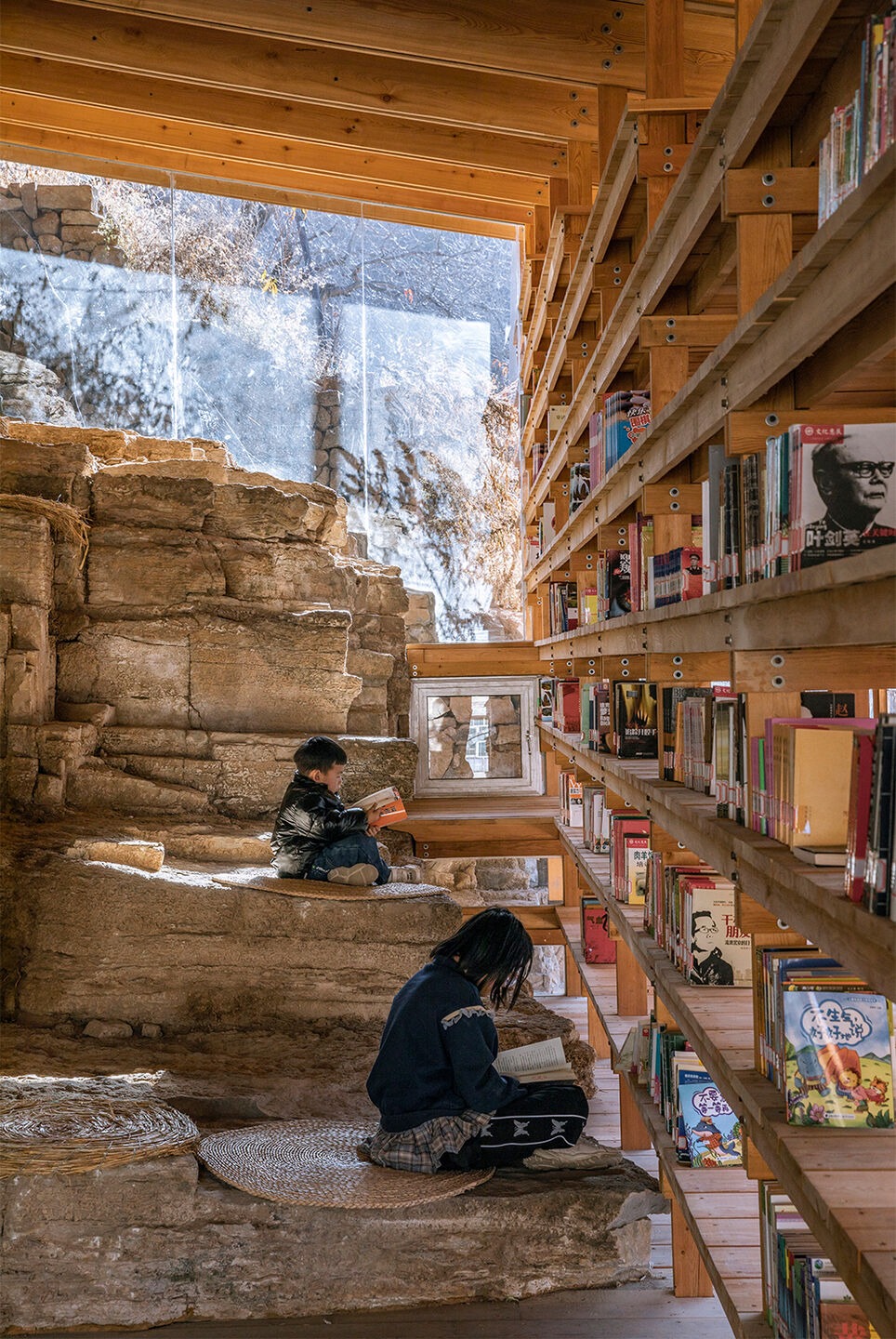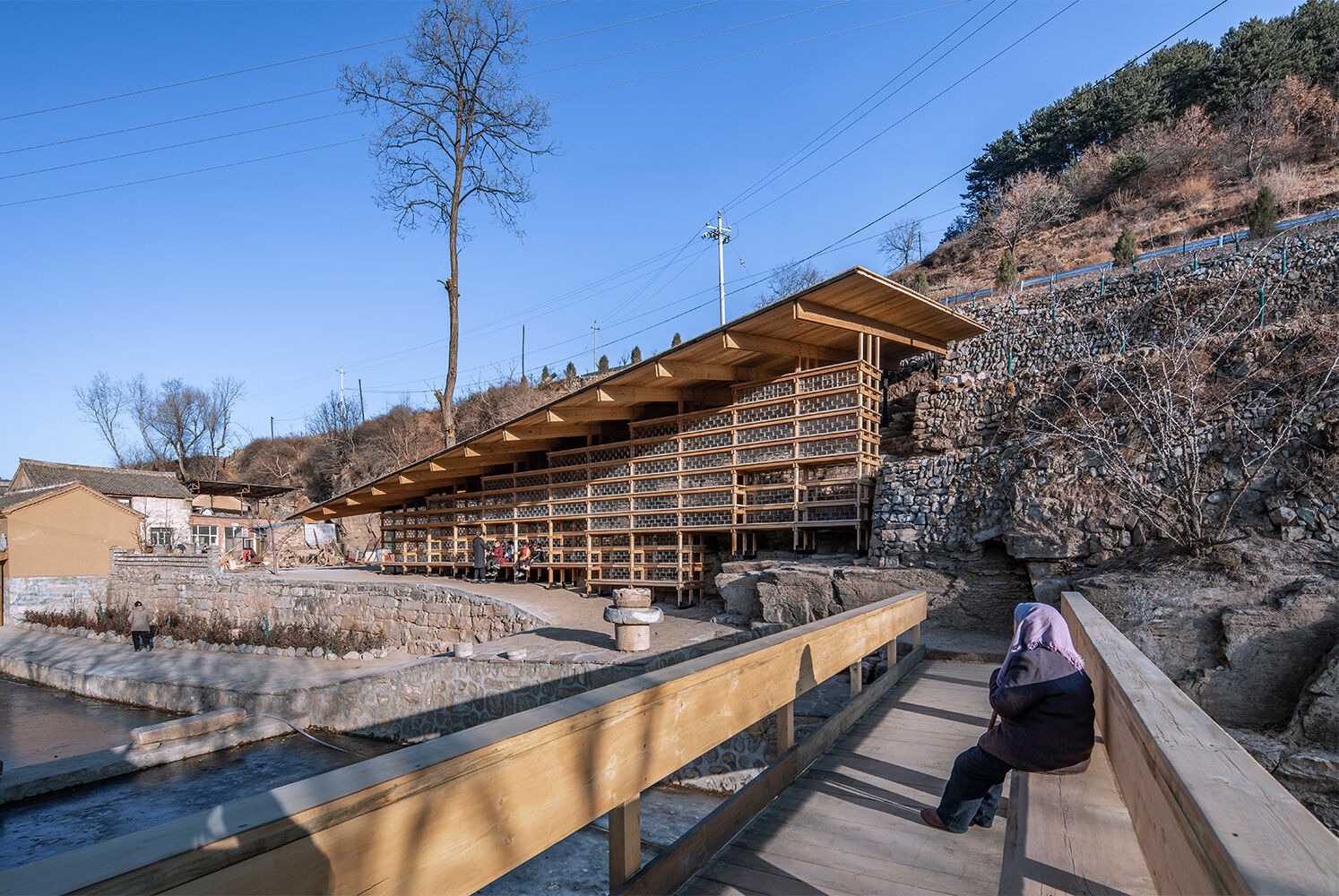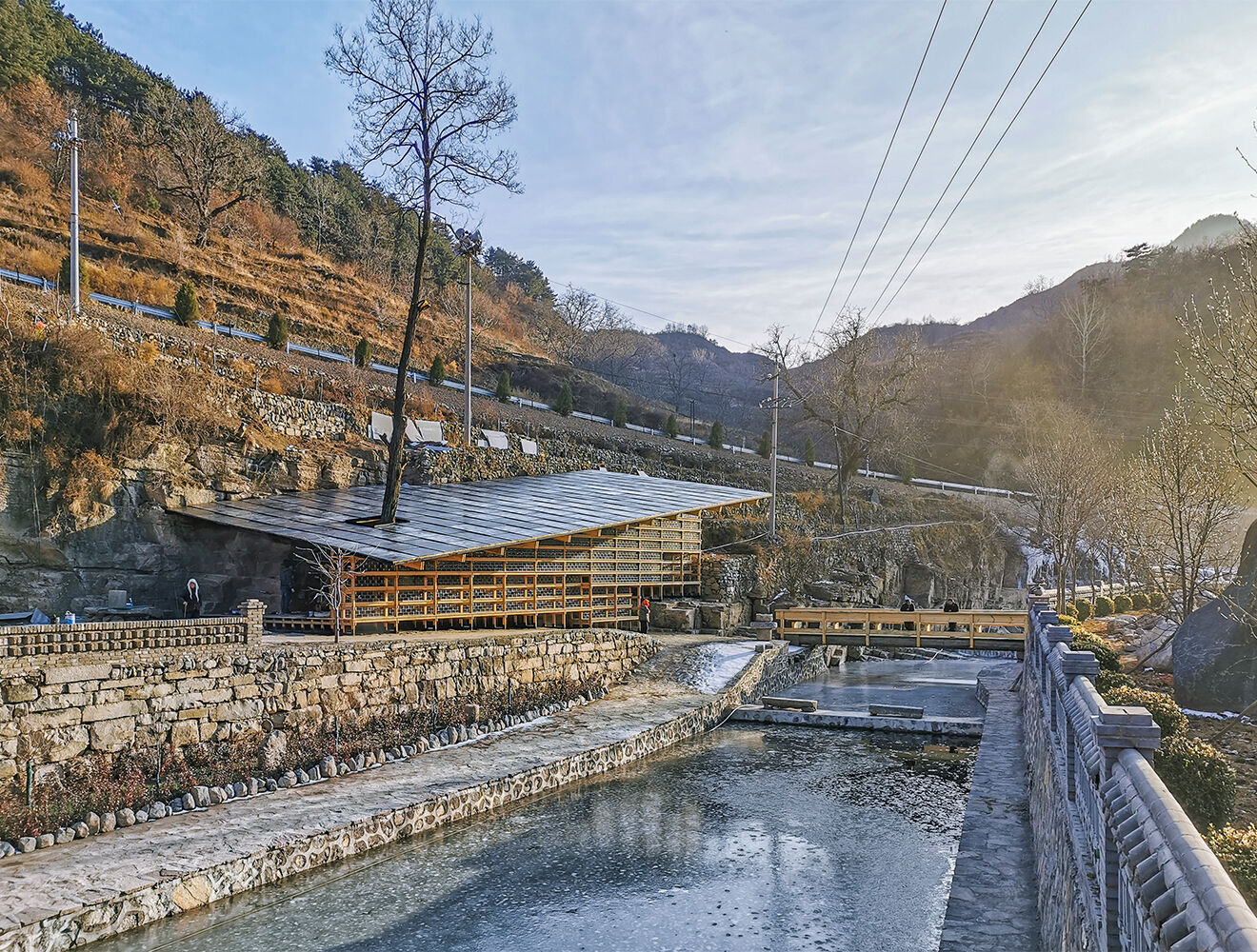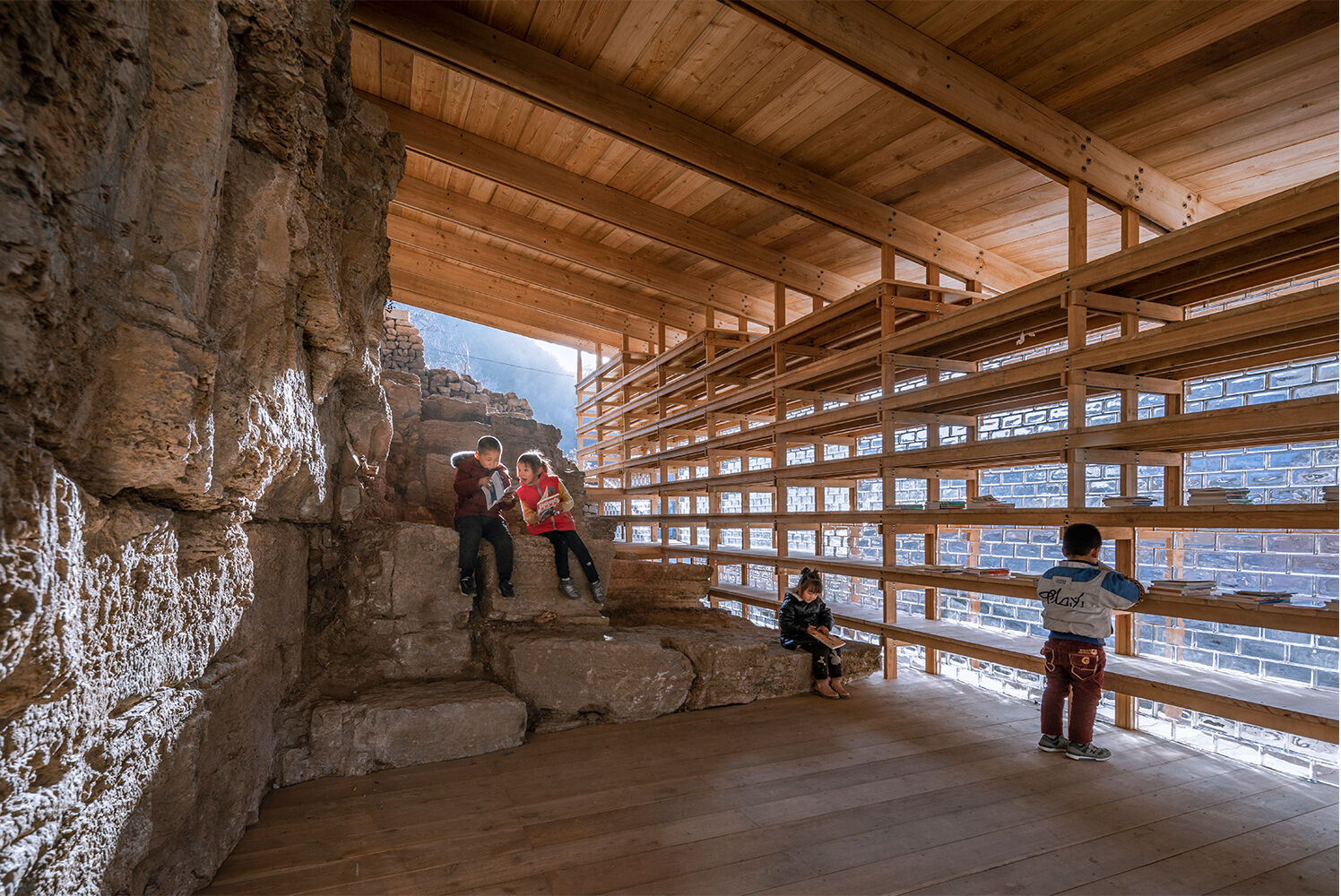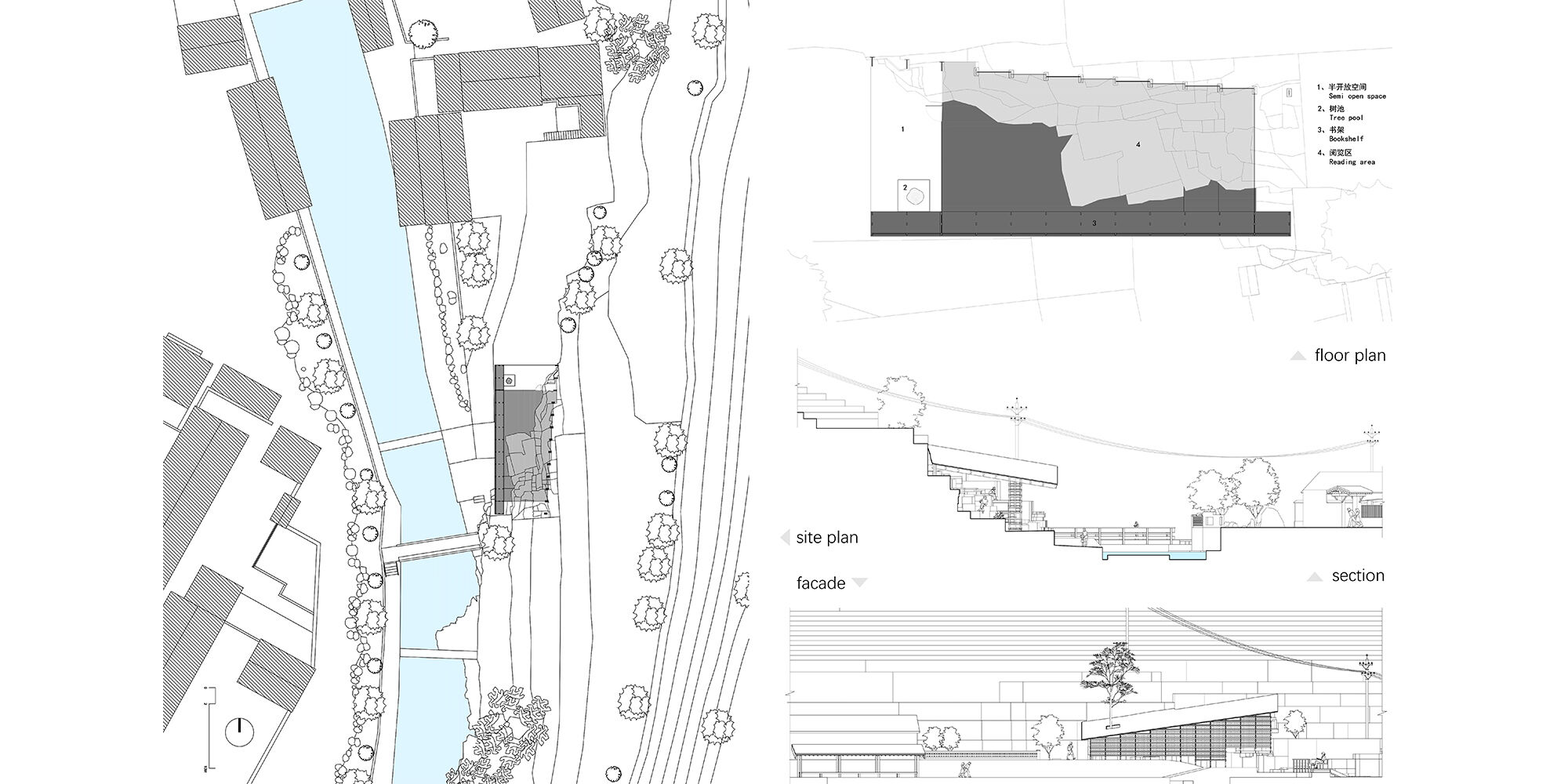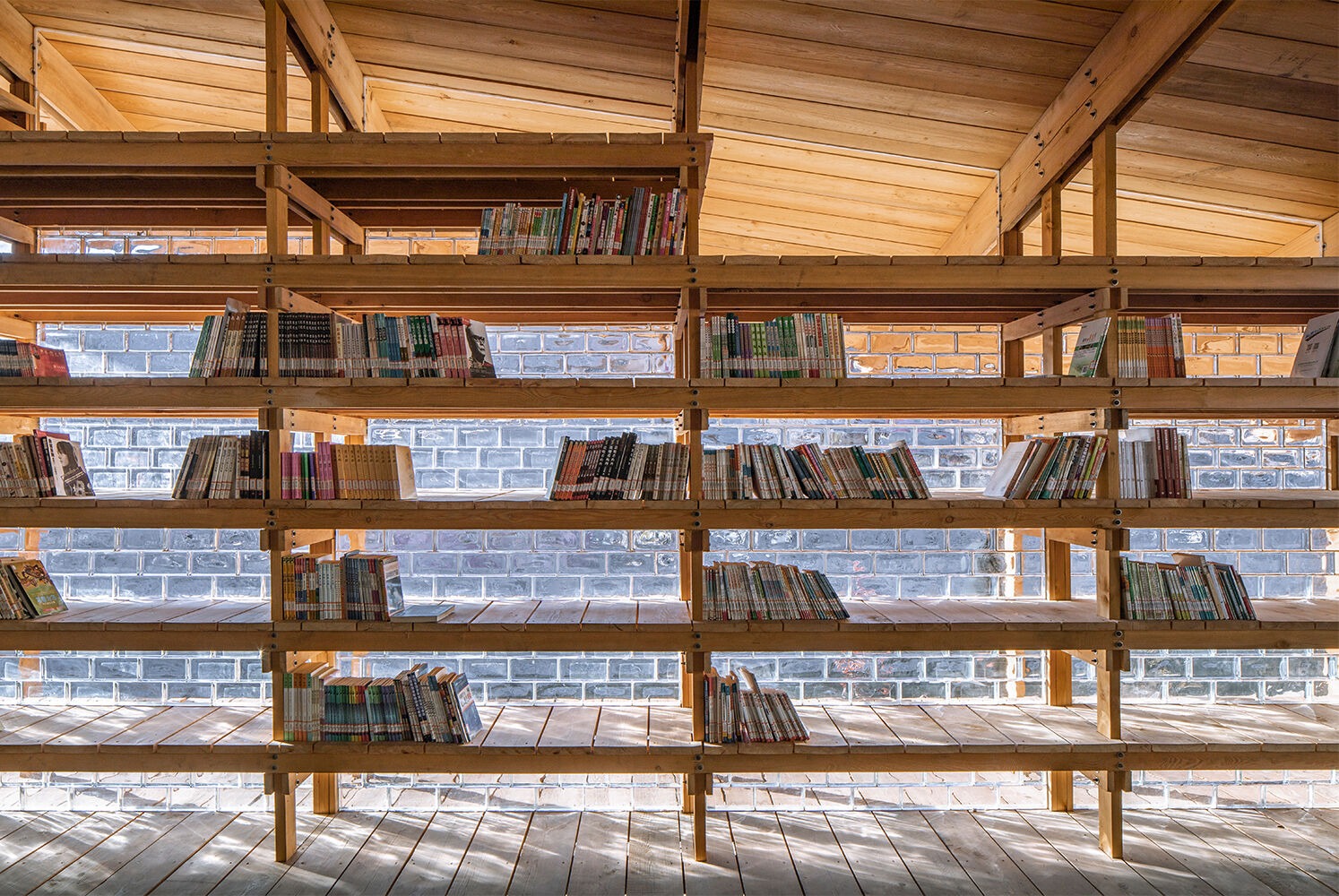
Zheshui Natural Library: a library attached to the rock
- LUO Studio Project
- Photographs by Jin Weiqi
The Zheshui Natural Library, designed by LUO studio, stands in a wild environment in the province of Shanxi, China, as a minimal but meaningful intervention. Its strength does not come from the dramatic gesture, but from subtlety: the library literally adheres to the rocky terrain, integrating the relief into its architectural logic.
The project has been recognized with the Design Educates Award 2021 for its approach that educates as well as edifies.
Strategy of insertion and connection with the environment
Zheshui Village rests in the folds of the Taihang Mountains. There, many traditional dwellings already lean against the rock to take advantage of its stability and protection. This constructive memory inspired LUO studio to “glue” the library to the rock massif, avoiding large earthworks and reducing its footprint on the ground.
The building is located between the rock wall and a water channel, taking advantage of the topography so that the torrent visually dialogues with the library. A tree grows across the roof, underlining the hybrid character between the built and the natural.
Lightweight structure
To minimize the impact on the environment, the foundations are lightweight, and the structure is made of surprisingly slender timber elements: columns with a cross-section of 4 cm and beams as small as 2.5 cm. Each component is precisely connected to achieve structural stability without material redundancy.
The column system fulfills a triple function: support, shelving and seating. This logic where structure and program converge is one of the most delicate gestures of the proposal.
The separations between columns are closed with glass bricks, acting as translucent walls that filter interior and exterior light simultaneously.
The roof is a composition of two layers of panels: one arranged horizontally and the other longitudinally, which reinforces its tactile character and its capacity for thermal adaptation.
Inner space: reading
Inside the library, the rock becomes a natural setting. The stone mass is exposed as an occasional seat or backrest, in dialogue with the wooden slats and shelves that cross the interior.
The transparency of the glass panels and glass bricks allows light to bathe the spaces gently, reinforcing an atmosphere of contemplation.
Lesson of an unfinished architecture
Although the library is finished, its idea seems open, malleable: as if the structure could grow, change, mutate. In it beats a notion of unfinished architecture, a building that understands its provisional status vis-à-vis nature. The decision to use light materials, with minimal foundations, reflects this modesty of design – the humility of not wanting to tame, but to accompany.
Zheshui Natural Library reminds us that in architecture it is not always the one who occupies the most volume that wins, but the one who occupies the best. This project shows that the dialogue with the rock, with water and with the landscape can produce a poetic reading without renouncing the technical.

